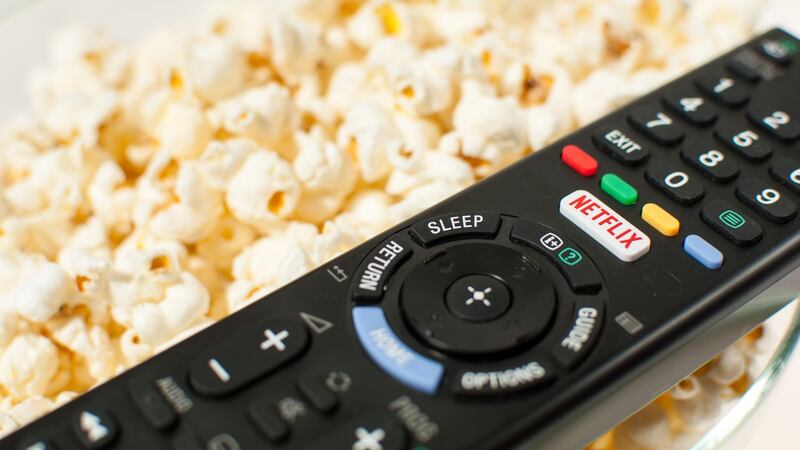On a recent walk through the suburb I grew up in, déjà vu struck and I was overcome with a sudden sense of Xtra-Vision.
It was a summer Saturday evening, exactly the time we used to drift down to the pokey but possibility-filled store to stare at the same unchosen cassette boxes we had stared at the week before.
If the newest of new releases had been nabbed, our fate was to reconsider titles we had rejected on countless previous trips and either commit to the best of them, or slink home empty-handed and faintly bereft.
Confronted with more choice than had been available to earlier generations, we panicked about making the wrong one and paying for a dud.
Whenever people report being trapped in a state of permanent Netflix scrolling in which they never press play – only up, down, right and left through the decks of its catalogue – I remember there is nothing new under the sun.
The term “analysis paralysis” predates on-demand streaming and was coined before the dawn of video rentals too. Decision fatigue has been part of the human condition probably for as long as we had more than two cave walls to daub on.
Prime evidence
But the paradox of choice – when we have so many options that we either freeze and make no choice at all or wind up feeling dissatisfied with the one we do make – is a concept that chimes hard with audiences today, and the tech-driven media knows it.
The same streamers that market themselves on their ultra-wide libraries of content now also do their utmost to guide subscribers to particular destinations. They develop features specifically designed to relieve us of our perennial decision-paralysis.
Prime evidence of this is the Netflix shuffle or “Play Something” button, in which Netflix promises to “pick things for you to watch based on your tastes” – you have to, ironically, decide not to make your own decision. Play Something is framed as a partially random, daring resort to the vagaries of an all-seeing algorithm. It presents itself as the personalised solution to your problems, unlike the top-down, broad-brush scheduling of linear television.

The shuffle button’s selection, in my experience, tends to be an already prominent new addition to the platform, rather than titles that have been languishing unwatched on your list or in some hidden corner for years. This makes it less fun than it could be.
Its advent is nevertheless the clearest acknowledgement yet by Netflix of the always-scrolling, never-picking phenomenon. Reports that it is also testing Netflix Direct, a service in which it lines up pieces of content one after another like an, ahem, television channel, has also furthered suspicions that a substantial cohort of people are absolutely useless at making viewing decisions on their own. Rather than let them worsen its churn rate, Netflix is experimenting with ways of keeping them in the loop.
Audio streamers are even more active in directing traffic. You don’t have to be much of a music fan to discover that they are not actually repositories of all known recorded music – there are many gaps.
But compared with what was available before, the level of access seems dazzlingly infinite. The downside is that our listening choices are inevitably cherished less than those made – and directly purchased – in pre-streaming times.
Playlist interventions
Being on these apps can feel aimless. It's no accident that Spotify started to thrive after it got better at shaping and editing its own product, promoting playlists such as New Music Friday UK that are compiled by humans, not AI, and sending emails that flatter its users into thinking their pattern of listening is unique.
As streamers behave more like linear broadcasters, the linear crowd are resolving to be more streamer-like. Rather than chase appointment-to-view hits, television channels lump entire drama series on to their on-demand apps to facilitate up-front binge viewing.
They do this with more enthusiasm than ever, despite the fact that so many series benefit from delayed gratification and having the audience on the same page at the same time.
Radio broadcasters have also shifted into the middle ground between their linear heritage and the on-demand competition. One intriguing case is the low-priced subscriptions that Bauer Media Audio has started selling for its niche UK music stations Jazz FM, Planet Rock, Kerrang! Radio and Scala, through which listeners can avoid ads, skip tracks and access various streams and programming.
These services are aimed at "super-fans". Wouldn't a super-fan be shelling out for Spotify or Apple Music anyway?
Bauer is yet to research whether its new sign-ups have other subscriptions or are market novices. But as odd as it might seem, the idea of offering a little more control and choice, yet not full control and choice, is where it sees the audio market going.
Passive v ‘lean-in’
"At one extreme, we see the passive experience that is live radio – amazing, right. Press the button and there it is. Incredible entertainment, effortless, seamless, always on. At the other end is the very active, lean-in, 40 million tracks, build your own playlist experience," said Bauer Media Audio president Paul Keenan. The game is to persuade listeners that "a bit more personalisation, a bit more control" is easy to access, easy to enjoy.
In the end, our approach to the media we consume will be similar to our approach to choices we make in other avenues of our lives. The extent to which we will let a brand make a decision for us depends on how much we trust that brand.
However much we are manipulated into making a “discovery” by algorithms or interface design or massive marketing budgets, there is still satisfaction in thinking we have found something wonderful that was apparently just left there on the rack.
Once we claim a certain degree of control, imagined or otherwise, it may be hard to relinquish it. Unless, of course, we get tired. Very tired.















